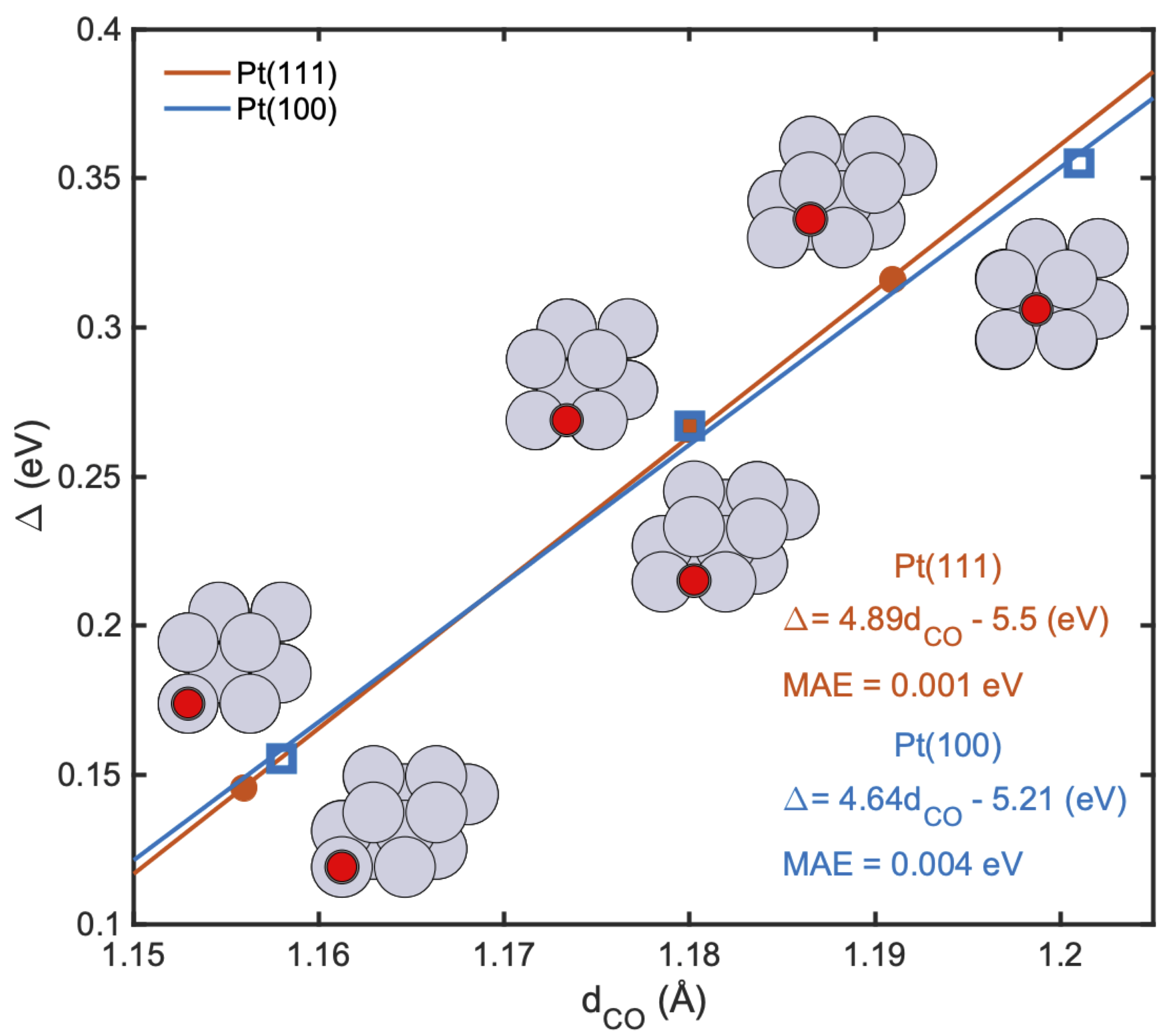2020 Virtual AIChE Annual Meeting
(683c) Optimal Packing of CO at High Coverage on Pt(100) and Pt(111) Surfaces
Authors
Vaidish Sumaria - Presenter, Carnegie Mellon University
Philippe Sautet, University of California, Los Angeles
Luan Nguyen, Kansas University
Franklin (Feng) Tao, The University of Kansas
High coverage structures for CO on Pt(111) and Pt(100) surfaces are studied by density functional theory modeling and compared to high pressure scanning tunneling microscopy experiments. Semilocal exchange correlation functionals are known to provide incorrect adsorption site and overestimated adsorption energy for CO on Pt. We develop a simple first-principles correction for the adsorption energy of CO on Pt(111) and Pt(100) using the bond length of adsorbed CO as a descriptor. The developed correction which decreases in the order top > bridge > hollow site is used to derive the surface stability diagram for CO adsorbed on 111 and 100 facets of Pt showing the thermodynamically stable CO configurations on the surface as a function of temperature and pressure. High coverage (θ>0.5) configurations of CO on Pt(111) lead to formation of superimposed hexagonal/quasi-hexagonal lattice of CO on hexagonal Pt(111) layer from a systematic exploration of such structures. Non-hexagonal CO structures seen in vacuum and low temperature conditions - c(â3x3)rect-4CO, c(â3x5)rect-3CO, and c(â3x7)rect-5CO are however only 5 meV/Ã
2 less stable than the hexagonal lattice at similar coverage. For Pt(100) at θ>0.75, the CO molecules adopt a one dimensional coincidence lattice and we observe the formation of (nx2) unit cells (n=4,6,8) with (2n-2) CO molecules in each cell on top/quasi-top and bridge/quasi-bridge positions creating a skewed hexagonal lattice to reduce CO-CO repulsion with increasing coverage. The computational results agree with the available experimental observations for Pt(111) and Pt(100). The integrated theoretical simulation and experimental observation provide structural data for the study of catalytic reactivity on Pt surfaces in reactions involving high CO pressures and suggest an approach for understanding roles of CO molecules on other metal catalyst surfaces in high pressure CO and during catalysis CO participates.


